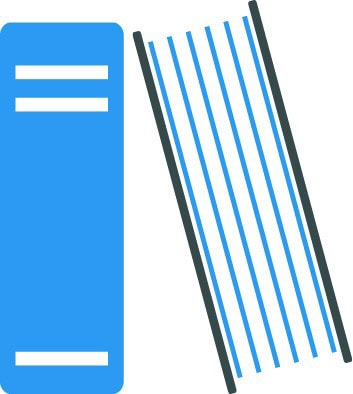126
Instructor’s Guide – Almost Routine
Overview:
Central Line-Associated Blood Stream Infections (CLABSIs) cause up to 60,000 preventable deaths in the U.S. each year. This story highlights how deviation from evidence-based protocols and checklists can place the patient at risk for CLABSI, and how the CUS technique can help improve team member collaboration and patient safety.

Primary Learning Outcomes
After completing this lesson, the student will be able to:
- Describe safe, evidence-based practices related to central line insertions
- Develop a checklist that includes proper protocols for a central line insertion scenario
- Understand and adopt critical language to ‘stop the line’ when deviation from protocols occurs, regardless of professional hierarchies using the CUS technique.

QSEN Pre-Licensure Competencies
The following QSEN competencies are addressed in this lesson:
- Evidence-Based Practice (EBP): Integrate best current evidence with clinical expertise and patient/family preferences and values for delivery of optimal health care.
- Safety: Minimizes risk of harm to patients and providers through both system effectiveness and individual performance.
- Teamwork and Collaboration: Function effectively within nursing and inter-professional teams, fostering open communication, mutual respect, and shared decision-making to achieve quality patient care.

QSEN Teamwork & Collaboration Enrichment
TeamSTEPPS® Best Practice: CUS
- Team Strategies to Enhance Performance and Patient Safety (TeamSTEPPS) is an evidence-based set of teamwork tools, aimed at optimizing patient outcomes by improving communication and teamwork skills among health care professionals.
- The CUS technique provides a framework for conflict resolution, advocacy, and mutual support. Signal words, such as “danger,” “warning,” and “caution” are common in the medical arena. They catch the reader’s attention. “CUS” and several other signal phrases have a similar effect in verbal communication. When they are spoken, all team members will understand clearly not only the issue, but also the magnitude of the issue.
- CUS Technique:
- First, state your Concern.
- Then state why you are Uncomfortable.
- If the conflict is not resolved, state that there is a Safety issue.
Reflection Questions:
Students will answer reflection questions upon completing the story. These questions are aligned with the QSEN competencies and are designed to help the student reflect on both the content of the story and the QSEN competencies addressed by the story.
- What safety protocols that can help prevent the risk of CLABSI were violated in this scenario?
- QSEN requires you to discriminate between valid and invalid reasons for modifying evidence-based clinical practice based on clinical expertise or patient/family preferences. Do you think Dr. Long’s deviations from EBP in this scenario were valid or invalid? Explain your reasoning.
- Thinking about the TeamSTEPPS best practice “CUS” described earlier, when and how could Carly have employed this technique to better advocate for her patient’s safety?
Discussion Questions:
Use discussion questions for face to face or online discussion boards to get students to further reflect on the content of the story together.
- What can we learn from this story?
- What other issues regarding patient care and advocacy need to be addressed in this scenario?
- How could this scenario have been prevented?
Suggested Classroom Mastery Activities:
These activities can be tailored for individuals or groups in a face to face or online setting. Use one or more to help expand and measure your students’ understanding of the primary learning outcomes for this lesson.
- Develop a graphic or poster checklist that details the safe practices related to central line insertions
- Identify what you believe to be the three most critical errors committed by the staff in the story, and describe how they should have been handled
- How could Carly have used the TeamSTEPPS “CUS” tool to better advocate for Mrs. Sturgis? Write out the dialogue and/or act it out for the class.

Measuring Student Mastery:
| Learning Outcome | Level 1 | Level 2 | Level 3 |
| Describe safe, evidence-based practices related to central line insertions | Student had difficulty describing EBPs related to central line insertion and requires some remediation in the topic. | Student described some EBPs, but lacked detail or omitted some EBPs related to central line insertion. | Student described evidence-based practices related to central line insertion in detail in writing and/or orally. |
| Develop a checklist that includes proper protocols for a central line insertion scenario | Student’s checklist did not include proper protocols and requires additional instruction. | Student’s checklist omitted some proper protocols or lacked detail. | Student’s checklist included all proper protocols. |
| Understand and adopt critical language to ‘stop the line’ when deviation from protocols occurs, regardless of professional hierarchies using the CUS technique. | Student struggled with applying the CUS technique to the scenario and requires remediation on the topic of critical language. | Student demonstrated some understanding of critical language and the CUS technique, but lacked detail or omitted some critical details. | Student demonstrated understanding of critical language and the CUS technique in writing and/or through re-enactment. |

Additional Story-Specific Resources:
For additional information on improving team communication, please consult the following articles and resources in Further Reading:
- The Silent Treatment
- TeamSTEPPS Essentials
- Achieving an Exceptional Patient and Family Experience of Inpatient Hospital Care

Story-Specific Best Practices and Proven Tools:
In addition to the ideas generated by students and mentioned in the activities, there are established best practices that may be appropriate to introduce or reference during this lesson to support communication. Some best practices to consider for improving team communication include:
- CUS
- 3Ws- Who I am, What I am Doing, and Why I Care
- Advocacy and Assertion
- More
